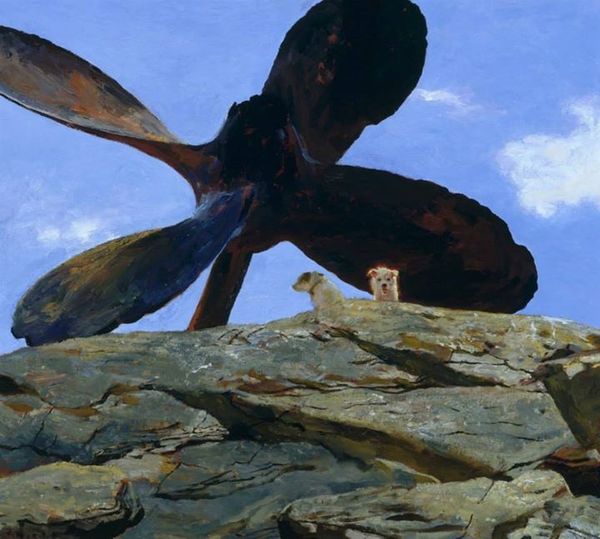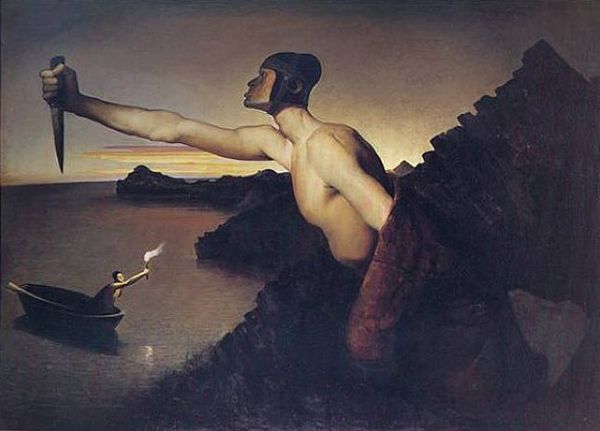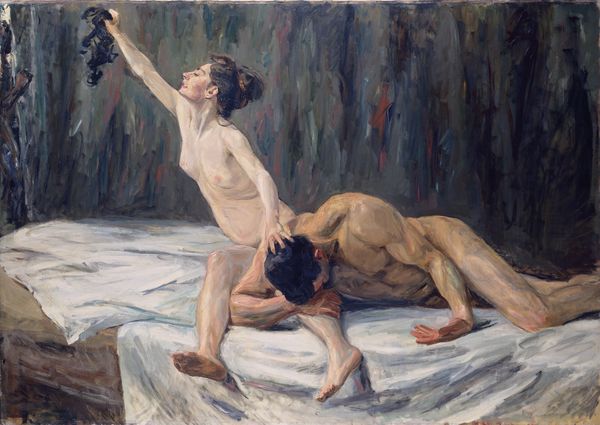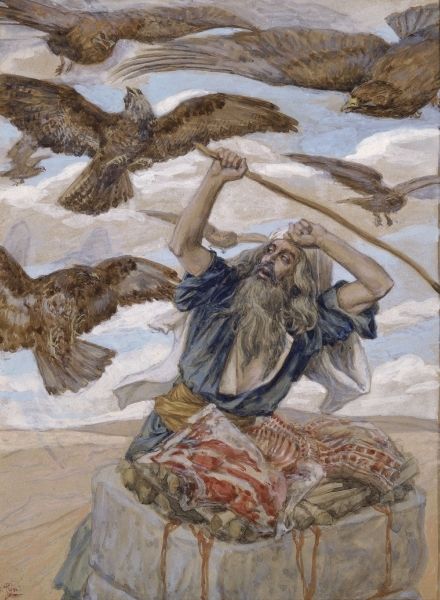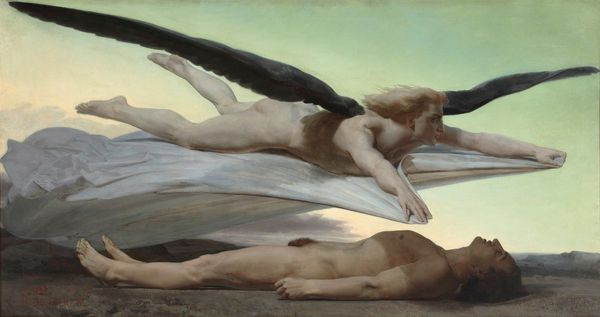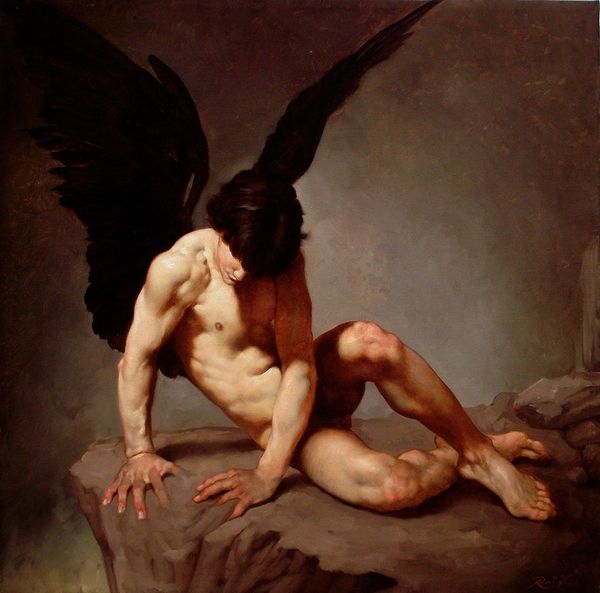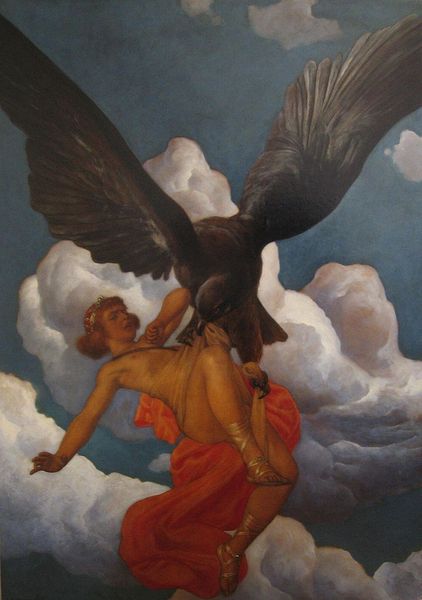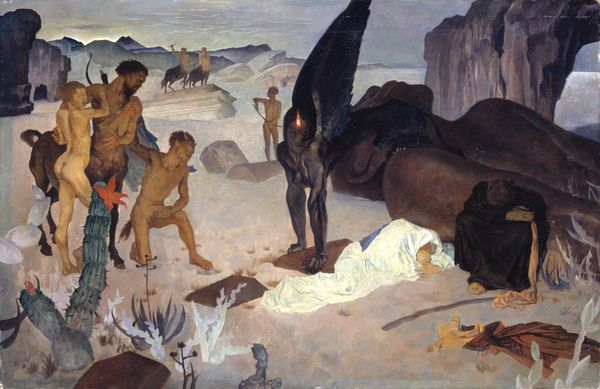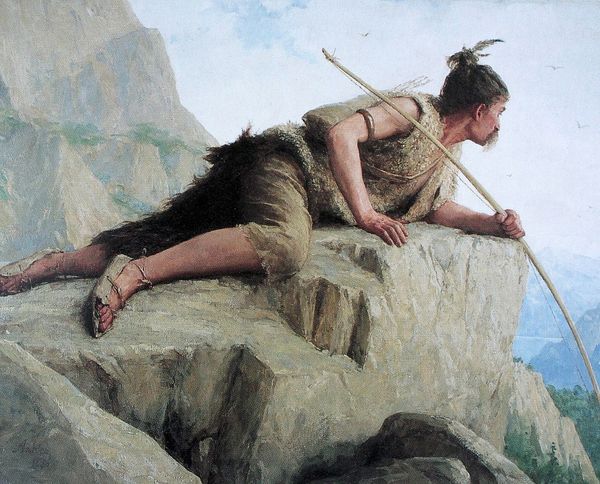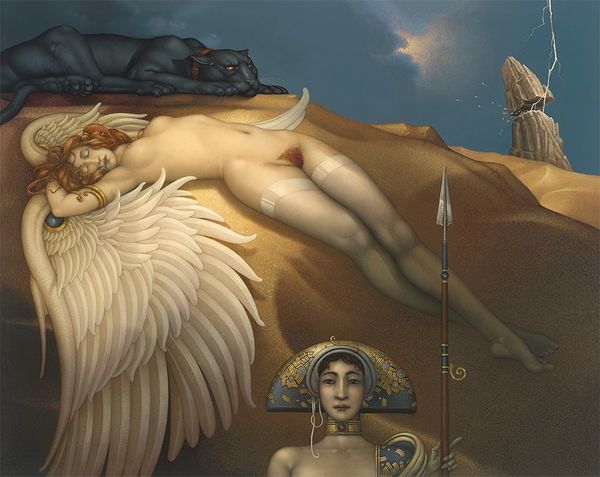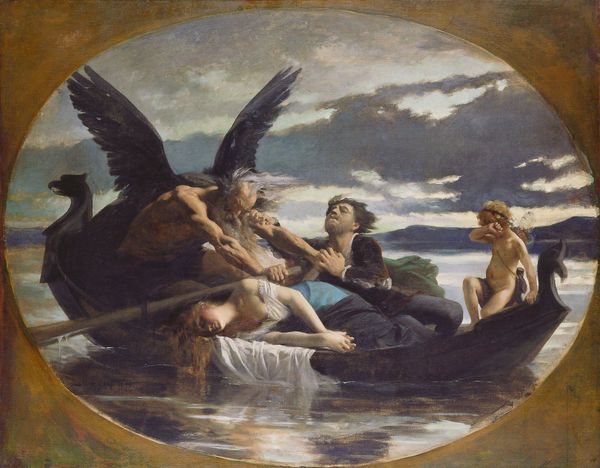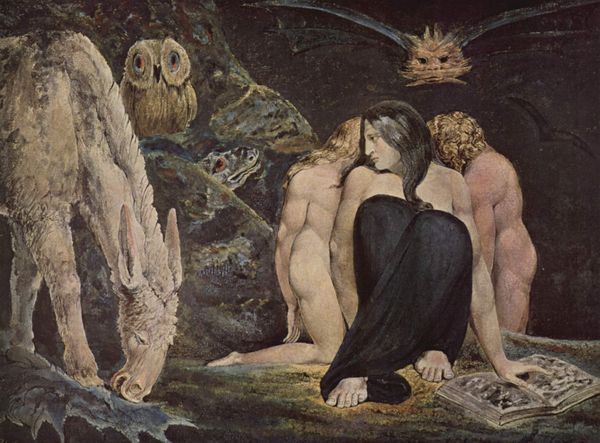
watercolor
#
narrative-art
#
landscape
#
figuration
#
oil painting
#
watercolor
#
symbolism
#
history-painting
#
portrait art
#
fine art portrait
Copyright: Public Domain: Artvee
Editor: James Tissot’s watercolor, "Elijah Fed by the Ravens," painted around 1896-1902, depicts a lone figure kneeling by what appears to be a body of water. There’s a certain bleakness to the scene, a sense of isolation emphasized by the rocky landscape. What do you make of it? Curator: The fascinating thing about Tissot, especially his biblical scenes like this, is considering his own socio-political context. He was a successful society painter who later devoted himself to religious subjects. It’s interesting to examine how this conversion, along with the political turmoil in France at the time, informed his spiritual representations. Notice how Elijah isn't idealized; he's presented as vulnerable, dependent. Editor: Yes, he looks quite worn down, and the setting appears very barren. Curator: Exactly. How does Tissot represent power here? Is it through a grand display of divinity or something more nuanced? Consider the raven – traditionally a symbol of ill omen. But here, the bird becomes an agent of divine care. This challenges traditional power dynamics and presents a more compassionate image of faith in the bible. Think about how Tissot makes the background so serene. The sky contrasts the stark presentation of Elijah and focuses on God's provision and quiet miracles rather than overt displays of force. Editor: So it's less about spectacle and more about the subtle workings of faith in difficult circumstances? It also seems like Tissot is challenging our expectations of religious imagery and of political power, even subtly critiquing institutions of power? Curator: Precisely. Tissot presents this familiar narrative in an unusual way. That makes it not only more accessible but also possibly prompts a different level of personal contemplation, or maybe even hints at institutional corruption. It definitely offers viewers space for engagement and reinterpretation within a constantly changing public landscape. Editor: This has definitely made me rethink Tissot's work, appreciating how cultural anxieties shaped his artistic vision and the painting itself. Curator: Indeed. It reveals how history is so important to viewing artwork and seeing the artwork in context.
Comments
No comments
Be the first to comment and join the conversation on the ultimate creative platform.
